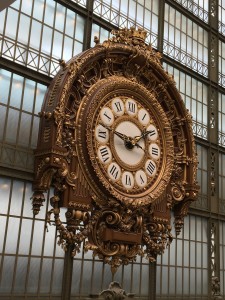
Photo: Mary van Balen
Kathryn and I successfully navigated the Metro this morning and made our way to the Musée d’Orsay. Originally it was a railway station that included a hotel and reception room, but as train transportation changed, the station was gradually abandoned. In 1977 the French government decided to transform the buildings into a museum, and by 1986 it was opened to the public. With huge clocks and vaulted ceilings, the building itself is breathtaking. And then, of course, there is the magnificent collection it holds.
Once there, we quickly made our way up to the 5th floor that houses works by the Impressionists. I immediately recognized some of the paintings, and my eyes filled with tears. Monet, Manet, Renoir, Degas, Cézanne, Pissaro, Sisley… The emotional connection was immediate.
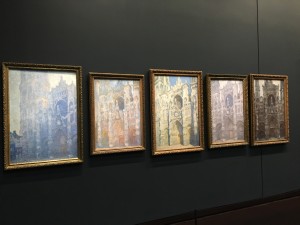
Series La Cathedrale de Rouen Claude Monet Photo: Mary van Balen
Standing in front of Monet’s series of paintings of the Cathedral of Rouen, I imagined the man, coming to the church day after day, at different times, to capture the light. What sight he had. I was reminded of a conversation with artist Marvin Triguba, years ago:
“Marvin,” I asked, “how do you paint the light that makes everything so alive, so real?” “It’s how I see,” he answered. “I see everything like that. Doesn’t everyone see that way?”
The paintings draw crowds of people from around the world. Some stand and gaze for a long while. Others take quick photos and move on. All, for a moment, experience the world through the artist’s eyes and heart.
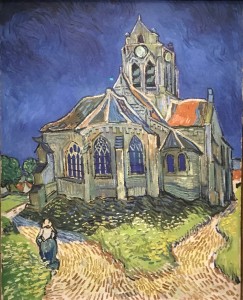
L’Englise d’Auvers-sur-Oise van Gogh
Photo; Mary van Balen
As I walked through the rooms there and in the Neo-Impressionism wing, I wondered at the subject matter—so ordinary and yet, as the artist reveals, extraordinarily beautiful and transcendent. There was one of snow on Paris rooftops, a yard full of white turkeys, a haystack, a vase of flowers, a picnic, a train station, a woman with a parasol, a table set for tea. Someone hurrying down a lane past a church, and a starry night.

Photo: Mary van Balen
Everyday sights. I thought about the kiwi and nectarines Kathryn cut up and placed in a white bowl for breakfast this morning. Baguette broken and buttered. Grey clouds threatening rain hanging over the the city.
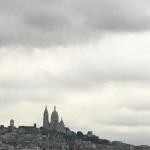
View of Sacré-Cœur from Musée d’Orsay
The couple van Gogh painted walking beneath the dark blue sky studded with brilliant stars, did they notice what glory hung above their heads? Did the woman hurrying around the cathedral notice the sunlight on the roof or the grass along the road?
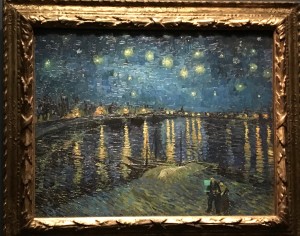
Starry Night Over the Rhone by Vincent van Gogh
Photo: Mary van Balen
If, as Emily in “Our Town” did when she returned to relive one day, we appreciated the beauty of life at every moment, how could we do anything but appreciate? How could we do anything other than respond as our gifts dictated: paint, dance, write, draw, play music, pray? Or, simply stand still and open every pore to the Grace that constantly overflows around us, in us, and through us?
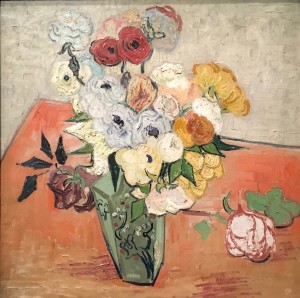
Roses and Anemones by Vincent van Gogh
Photo: Mary van Balen
Today, I gave thanks for artists who have reminded us of the Sacred present in our midst. Thanks for those who recognize the value of their work, collect it, preserve it, and make places where we can come to see and be reminded that we move through wonder every day.




